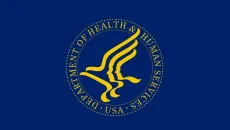Andrea Fox
Cybersecurity In Focus
Bringing in technical reinforcements and fostering staff buy-in can increase overall confidence that network blind spots – and compliance with new state healthcare cybersecurity laws – are being addressed, says one rural hospital's IT director.
The U.S. Department of Health and Human Services seeks to expand its enforcement actions and is encouraging patients and health IT developers to report providers and other organizations that stifle the exchange of electronic health information.
A five-year waiver extension would not only give more seniors access to the proven care delivery model, but would also enable continued progress toward permanent expansion, they tell lawmakers.
The layoffs come on the heels of others in the Bay Area and in the company's cloud infrastructure unit. A new KLAS report, meanwhile, shows mixed reviews from Oracle healthcare clients.
A legal settlement directs the U.S. Department of Health and Human Services to again make available data that healthcare stakeholders say is essential to designing interventions, tracking healthcare outcomes and allocating resources effectively.
New announcements also include an artificial intelligence tool to improve surgical operations while reducing waste and an EHR-agnostic AI scribe.
The software bill of materials guidance update focuses on improving scalability by refining data fields and supporting automation in security operations, the Homeland Security agency says.
The Recognized Coordinating Entity said the growing national interoperability network now represents thousands of organizations and will continue to expand over the next year.
"Despite the overwhelming strategic priority of improving patient and member experiences, most organizations lack the necessary infrastructure and data integrity to support it," Verato finds.
Creating, maintaining and using an asset inventory and taxonomy can protect a network's most vital assets and help organizations stay ahead of potential cybersecurity and operational threats.










